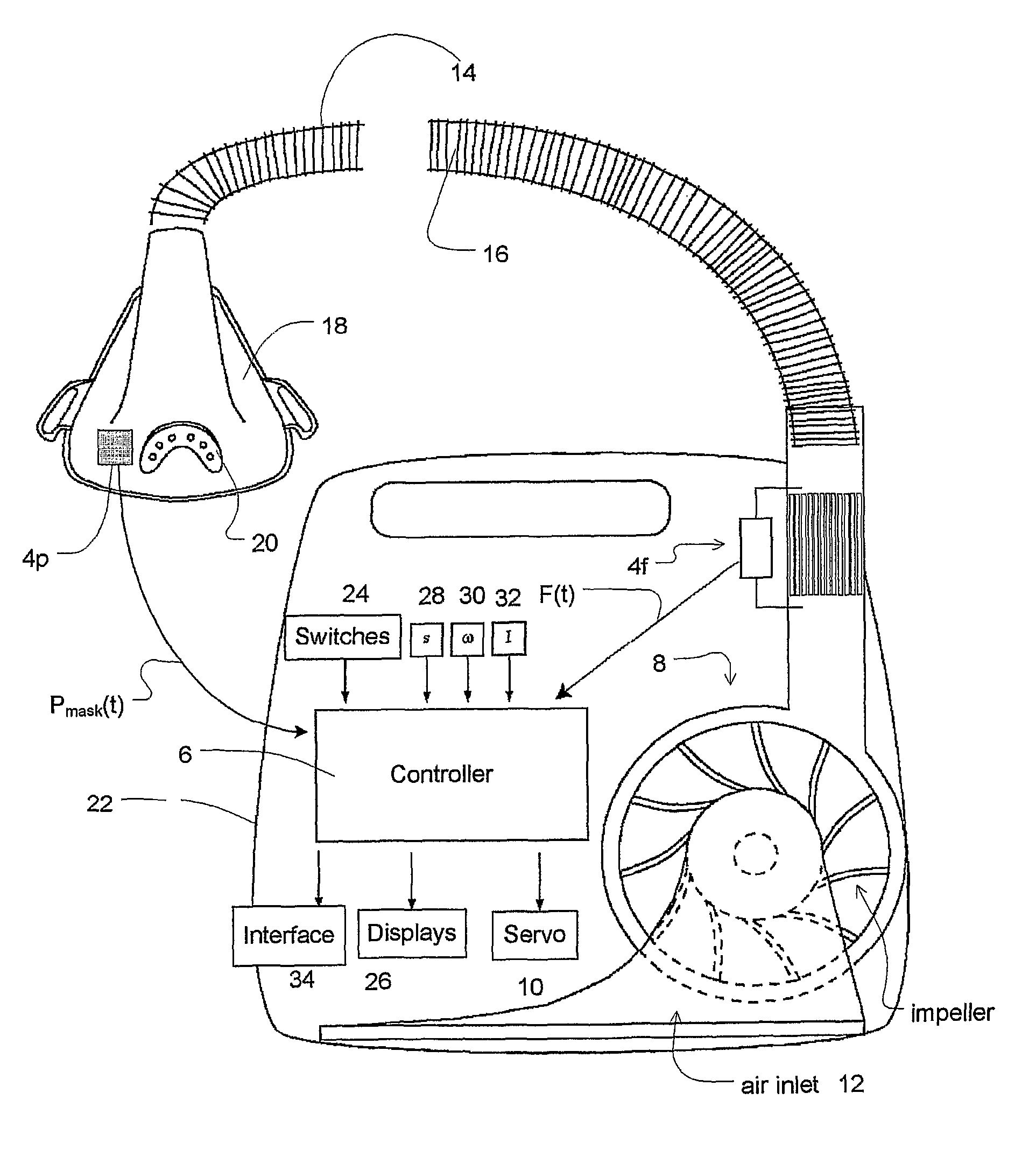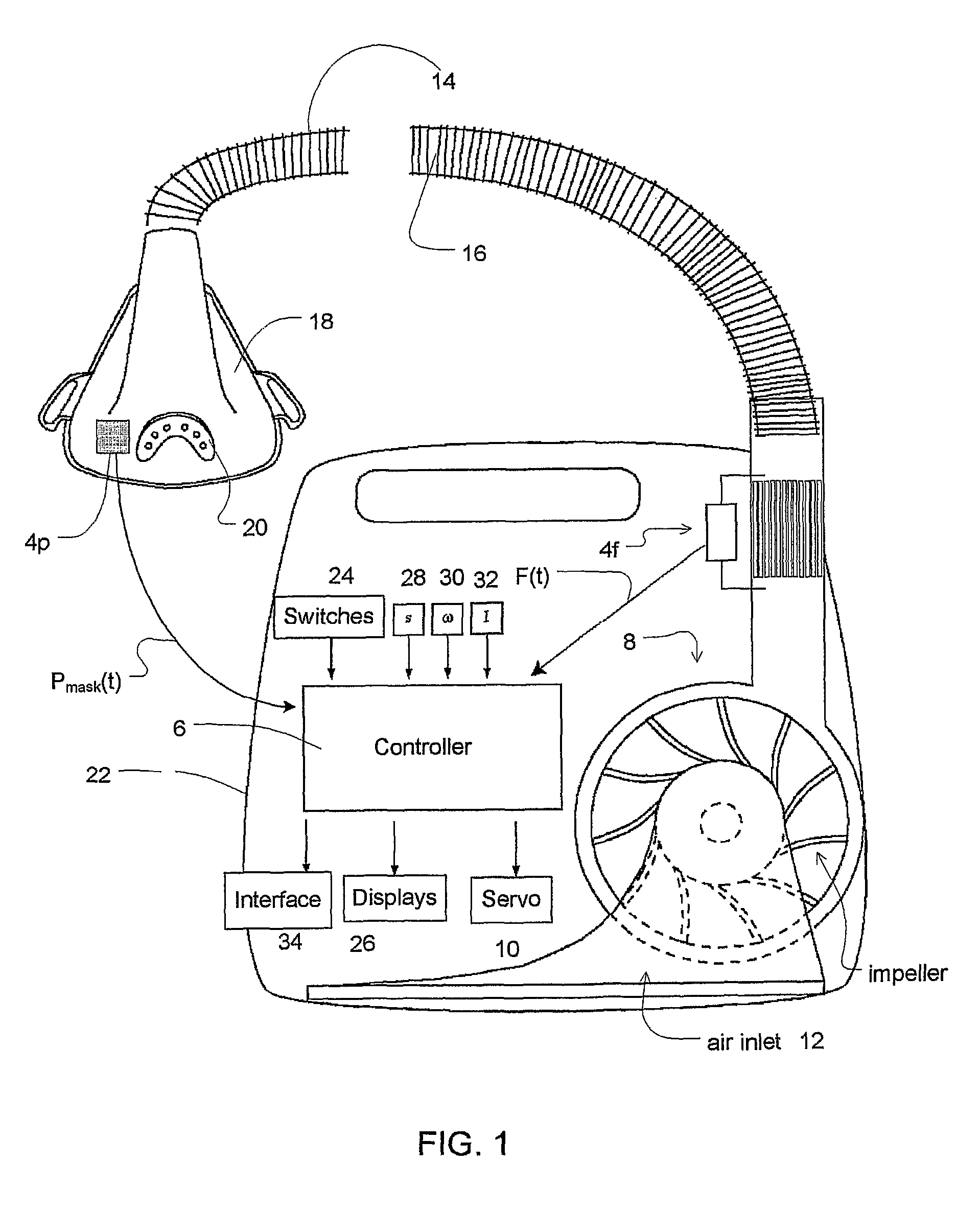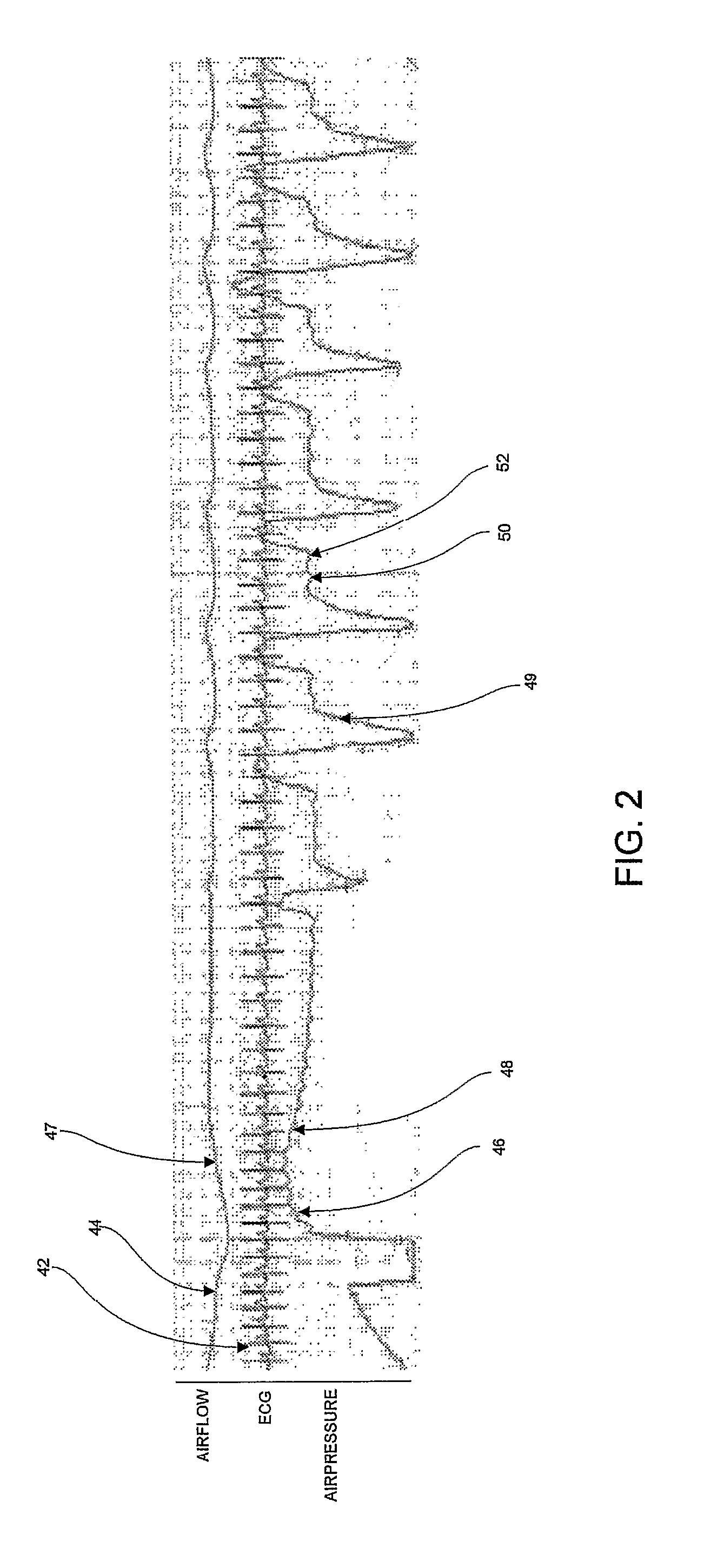Cardiac monitoring and therapy using a device for providing pressure treatment of sleep disordered breathing
a technology for monitoring and therapy of cardiac output, applied in the direction of valve operating means/release devices, applications, diagnostic recording/measuring, etc., can solve the problems of decreased blood oxygenation and disruption of sleep
- Summary
- Abstract
- Description
- Claims
- Application Information
AI Technical Summary
Benefits of technology
Problems solved by technology
Method used
Image
Examples
Embodiment Construction
[0018]Turning to FIG. 1, a device for treating SDB during sleep is disclosed that is capable of carrying out the features of the invention (such as a CPAP device), including sensing cardiogenic oscillations in air pressure / flow readings to determine whether an apnea event is central or obstructed. Mask flow is measured using a flow sensor 4f and / or pressure sensor 4p with a pneumotachograph and differential pressure transducer or similar device. A flow signal F(t) is derived and mask pressure is measured at a pressure tap using a pressure transducer to derive a pressure signal Pmask(t). The pressure sensor 4p and flow sensor 4f have been shown only symbolically in FIG. 1 since those skilled in the art would understand how to measure flow and pressure.
[0019]Flow F(t) and pressure Pmask(t) signals are sent to a controller or microprocessor 6 which then determines how to adjust the blower. The controller 6 may include integrated circuits, a memory and / or other instruction or data stora...
PUM
 Login to View More
Login to View More Abstract
Description
Claims
Application Information
 Login to View More
Login to View More - R&D
- Intellectual Property
- Life Sciences
- Materials
- Tech Scout
- Unparalleled Data Quality
- Higher Quality Content
- 60% Fewer Hallucinations
Browse by: Latest US Patents, China's latest patents, Technical Efficacy Thesaurus, Application Domain, Technology Topic, Popular Technical Reports.
© 2025 PatSnap. All rights reserved.Legal|Privacy policy|Modern Slavery Act Transparency Statement|Sitemap|About US| Contact US: help@patsnap.com



